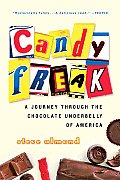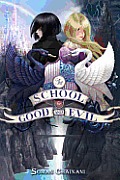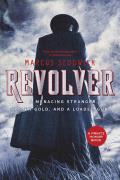 by Steve Almond
by Steve AlmondGenre: Memoir
Age group: 11+ (But it's really versatile. An adult could read this and not get bored. A 10 year old could probably handle the language as well. (I don't mean bad language! He uses a lot of obscure words))
Throughout his whole life, starting at a very young age, Steve Almond has loved candy. He's kind of relied upon candy to help him through hard times. He eats at least one piece EVERY DAY without fail. But not all candy is available anymore. For example, one of his absolute favorite chocolate bars, the Caravelle, was discontinued. Why do smaller candy businesses close down? How are candies and chocolate bars like the Caravelle even made? These are just some of the questions he's trying to answer as he journeys through "the chocolate underbelly of America" to find out the sweet, sticky truth.
The topic of this book is just amazing. I mean, a whole book about candy, where you actually get to see what goes on inside real live candy factories and read about the marvelous tastes and fillings and chocolate enrobers and nut applicators involved with the making and consuming of these candies? It was awesome! Steve Almond uses many big and/or obscure words that younger readers may have to look up the meanings for, but other than that, the language is pretty easy to understand. The memoir aspect of this book was made clear in the beginning, a little in the middle parts, and again reinforced at the end, but sometimes the "So What" was a little unclear or hard to make out. However, you, the reader, still get that candy has been his crutch in hard times and that it is very important to him. This book was filled with awesome descriptions and inspired me to eat more candy, especially the ones described in great detail in this book. Before Candyfreak, I never realized how much I was missing out on.




